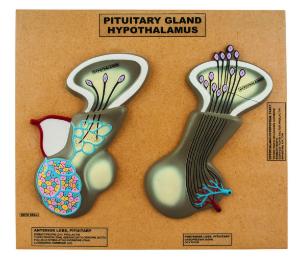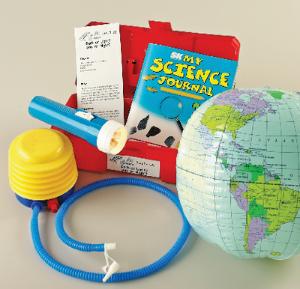Circadian Rhythms: What Makes Us Tick?
High School
As discussions about Daylight Saving Time continue, Americans are still navigating the twice-a-year clock changes. While the Sunshine Protection Act was passed by the U.S. Senate back in March 2022 to end Daylight Saving Time, the bill remains unapproved in the House of Representatives.
For now, we’ll keep adjusting our clocks in the fall and spring to maximize our daylight. In the meantime, students in your science class are eager to delve into the effects of these time shifts on the human body’s circadian rhythms.
What is circadian rhythm, and why is it important?
Also known as the human body clock, circadian rhythms are the physical, mental, and behavioral changes we have that follow a 24-hour cycle. While researchers don’t fully understand circadian rhythm processes, they know that these biological cycles are influenced by the regular light and dark intervals in each 24-hour day.
One of the most critical and well-known circadian rhythms is the sleep-wake cycle. Many factors prepare your body to fall asleep and wake up. The body’s internal clocks sync with specific environmental cues, like light and darkness, that help determine when we’re ready to rise and shine or welcome the sandman. You can help students use scientific inquiry to explain how factors like artificial light or caffeine can disrupt this process. Studies show that artificial light before bedtime (including devices) can suppress melatonin levels and shorten its duration.1 And that cup of java has caffeine which blocks adenosine (a nucleoside in the body that promotes sleep). Caffeine binds to the same brain receptors as adenosine, preventing it from acting.2
How does light impact the sleep-wake cycle?
If you follow a natural day and night schedule, the light will enter your eyes and tell the brain that it’s daytime. The brain’s suprachiasmatic nucleus (SCN) receives these signals and transmits them to the rest of your body through the sympathetic (fight or flight) and parasympathetic (rest and digest mode) systems. The SCN is the central pacemaker of the circadian timing system and regulates most circadian rhythms in the body.3 This process helps your main body clock stay in tune with day and night. Ask the students in your class to connect this concept to daylight saving time.
What happens when circadian rhythms are disrupted?
Some people have problems with their sleep-wake cycle, meaning their brain does not keep them awake or asleep at the desired times. Insomnia, narcolepsy, and irregular sleep-wake rhythm are examples of sleep-wake disorders that keep sleep researchers up at night. Awaken students' curiosity by connecting your lesson plans to detailed examples like:
Jet Lag
Anyone taking a red-eye flight between New York and California knows it’s a surefire way to get jet lag! Jet lag disorder is a temporary sleep problem that can affect anyone who quickly travels across multiple time zones. So, although you’ve physically relocated to a new time zone, your body's internal clock is still synced as snug as a bug in a rug to your original time zone. The difference in the timing of daylight between time zones is a critical factor. Light influences the regulation of melatonin, a hormone produced in the pineal gland and triggered by the SCN, to help synchronize cells throughout the body. The body treats melatonin as a darkness signal4 which promotes sleep. When the light signal is low at night, the brain releases melatonin. And during daylight, very little melatonin is released.
Several methods are used to combat jet lag; your lesson plan can shed light on the science behind those methods.
Non-24-hour sleep-wake disorder
Non-24-hour sleep-wake disorder (N24SWD) is most common in people who are blind.
If a person with blindness has no light perception, they may experience continual circadian desynchrony (conflict between the circadian system and cyclic environmental cues). Because light information does not reach the hypothalamic circadian clock, they experience cyclical episodes of poor sleep and daytime dysfunction.6 People with sight who work night shifts or get jetlagged may also experience symptoms of circadian desynchrony.
You can extend student discussion by discussing why researchers use a daily melatonin dosage to replace synchronizing “time cue” for people with N24SWD.
Don’t lose any sleep about including circadian rhythm concepts in your lesson plan. Your students will light up!
1. J Clin Endocrinol Metab. 2011 Mar; 96(3): E463–E472. 2. American Academy of Sleep Medicine 3. Hastings MH, Maywood ES, Brancaccio M. Generation of circadian rhythms in the suprachiasmatic nucleus. 4. Mayo Clinic: Jet lag disorder 5. Neuroanatomy, Nucleus Suprachiasmatic Melinda A. Ma; Elizabeth H. Morrison. 6. Dialogues Clin Neurosci. 2007 Sep; 9(3): 301–314. Stephen Lockley et. al.
Recommended Products
[StartProductBlock]

Eisco® Human Pituitary Gland and Hypothalamus Demonstration
Detailed 3-D renderings of the pituitary gland and the hypothalamus from the human brain are greatly enlarged, revealing the internal structure of these parts of the human brain.
[EndProductBlock]
[StartProductBlock]

Tackling Science Kit: Dark or Light? Day or Night?
Using a flash light and globe, students discover that day and night are caused by the sun shining on the earth as it rotates on its axis.
[EndProductBlock]
[StartProductBlock]

Pineal Body Slide
Human endocrine gland. Identifying features clearly distinguishable. Rigorous quality control standards.
[EndProductBlock]
